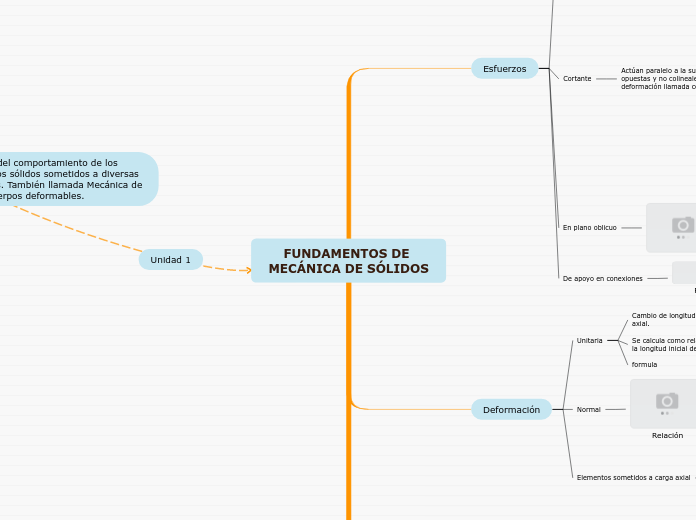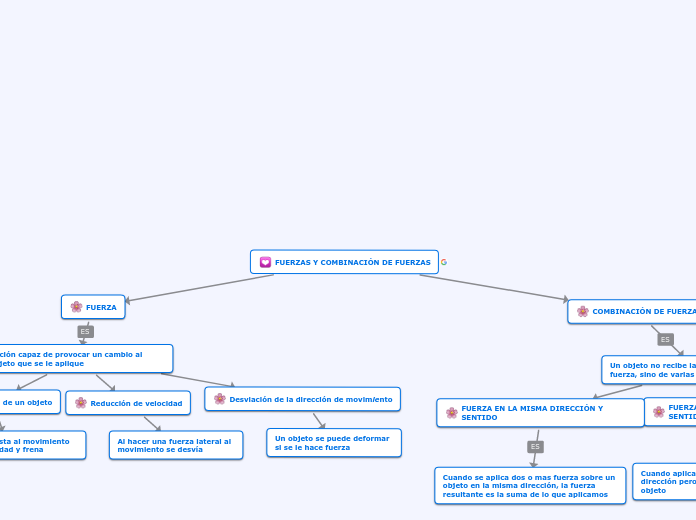Unidad 1
Trata del comportamiento de los cuerpos sólidos sometidos a diversas cargas. También llamada Mecánica de los cuerpos deformables.
MECÁNICA DE SÓLIDOS
FUNDAMENTOS DE MECÁNICA DE SÓLIDOS
To name your story, you have to think about the overall message and what you want your audience to understand from the story. Also, make it relevant and easy to remember.
Problemas estáticamente indeterminados
The ending of a story is essential. We all know that if the ending is weak, what happened before loses its importance. So make it unpredictable, but fair. A resolved ending answers all the questions and ties up any loose threads from the plot.
No se puede determinar las fuerzas internas usando solo estática.
This is the moment when the main character surpasses the last obstacle and finally faces their greatest challenge.
The climax usually follows one of these patterns:
- realization
- resolution
- choice
Type in your answer.
Ecuación de compatibilidad: es diferente para cada situación.
Ley de Hooke
Why does your character need to confront this challenge? What does he/she expect to accomplish by solving it?
See a few examples:
- will marry in 3 days
- can fix the mistakes of the past
Anisotrópicos
Propiedades mecánicas del material dependen de la dirección considerada.
Isotrópicos
Propiedades mecánicas de material son independientes de la dirección considerada.
Deformación
The middle of the story is where you add layers of complications that will lead to the end. Reveal more about the character's journey. Did their personality go through changes? How did they overcome the challenges? And as you build up the story’s central conflict, make it more personal to that character. Also, from the middle act, you have to lead into the final act.
Elementos sometidos a carga axial
There wouldn't be any tension and excitement in your story if there weren't any obstacles in your character's way.
La deformación se mide por el desplazamiento relativo de un extremo del elemento con respecto al otro.
A story is nothing more than a character overcoming a series of difficulties to reach the desired goal. Obstacles usually create suspense and conflict. In overcoming obstacles, there is growth: weak becomes strong; hatred turns into love; sadness into happiness; wrong into right; lies into truth; or evil becomes good.
See a few examples below:
- stopping a meteor
- finding a killer
- finding love
Your character(s) need(s) motivation in order to solve the challenge(s).
Relación
Secondary characters might also have motives that lead them to cross paths with the main character or which might trigger them to help the main character.
Unitaria
Each story has a main character and that character usually needs to solve a problem or challenge. The character's challenge is the one that creates tension throughout the story.
formula
Se calcula como relación entre la deformación total y la longitud inicial del elemento.
Type in any other challenges which other characters in the story need to face.
Cambio de longitud del elemento debido a esfuerzo axial.
In most stories, there are 3 challenges. The number 3 is a mystical number symbolizing completeness. Try to come up with interesting challenges with which your character needs to struggle.
See a few examples below:
- turns into a werewolf at night
- is sent back in time
Esfuerzos
In the beginning of the story (or the exposition), you will need to introduce the setting and characters. You might also want to introduce the main conflict. This part of the story is important because it gives the reader necessary background information and maybe even a first insight into a character’s personality.
De apoyo en conexiones
En plano oblicuo
Cortante
The setting (time & place) of a story can change throughout the plot.
Actúan paralelo a la superficie. Producido por fuerzas opuestas y no colineales que ocasionan una deformación llamada corte o cizalladura.
Your story can take place wherever your imagination will take you to.
For example: in an elevator, in an enchanted forest, etc. Don't forget to give details of the environment each time the setting changes, otherwise, the story can be confusing. Also, mention the seasons as each of them has unique weather and events.
Tipos
Cortante doble
Cortante simple
Se encuentra en pernos, pasadores y remaches utilizados para conectar diversos elementos estructurales.
Su distribución no es uniforme.
Normal
Characters are essential to a good story. Usually, the protagonist(s) is/are the most affected by the plot. Introduce a character by focusing on their actions, interests, and occupation, as the physical appearance doesn't make a difference in most cases.
Fuerza por unidad de área. Actúan en dirección perpendicular a la superficie.
Type in the name of your character.
Unidades [F/L^2]
Add other qualities/attributes of the character.
Fórmula
What is your character's main goal?
fight Evilfind lovedefeat his/her enemyrule the worldmake friendstime travelmake an awesome discoveryOther
(-) Esfuerzo de compresión
Which traits best describe the character's personality? Choose more if necessary:
introvertedloyalkindindependentquick-thinkingadventuresomeidealisticsweet-naturedcalmrisk-takercreativewittystrictfussyweirdclumsyharshaggressivecarelessclingingcowardlycrueldeceitfulimpulsiveOther
(+) Esfuerzo de tensión
Choose the type of your chacter:
Protagonist (main character)Antagonist (main character's opponent)Flat (stereotypical character)Round (his/ her personality develops throughout the story)Static (doesn't evolve as a person throughout the story)Dynamic (dramatical change in personality)Confidant (the main character trusts him/ her)Foil (contrasting character who enhances the personality of another character)Other










